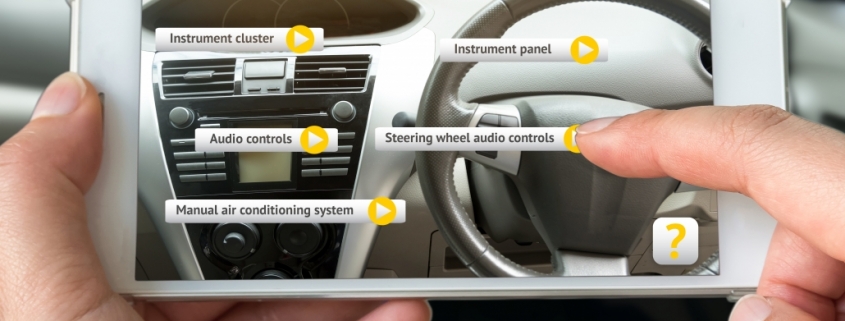HOW AR AND VR DRIVES THE CAR-BUYING EXPERIENCE
Like so many industries, technology is shaping the auto sector. And when it comes to car-buying in 2020, creating connected experiences is key.
The car-buying experience is almost universally despised. In-person negotiations and spending the day hopping from dealership to dealership to test drive cars is an experience that most consumers want to avoid.
Car dealers aren’t happy with the situation, either. Getting people into auto dealerships is becoming increasingly difficult, and millennial customers, in particular, are resisting taking part in traditional dealer/customer negotiations. The solution? It lies in technology…
THE RISE OF DIGITAL PURCHASING
Overall in the U.S, vehicle sales are slowing down for reasons such as consumers holding onto their cars for longer and buying less often (an average of 6.5 years today compared to 4.3 years just a decade ago). For car dealers facing these challenges, the focus is to make the digital buying experience work in harmony with the consumer and the dealership.
As for the modern consumer, technology enables on-demand services and purchases, therefore they are beginning to expect no different from auto brands. So how can augmented and virtual reality assist when buying/selling a car in 2020?
BENEFITS FOR FOR THE DEALER:
Lower Inventory Required
Auto dealers always face with the issue of only keeping vehicles that are high in demand in their inventory. However, this makes them unable to showcase all variants and colors that are available for a particular vehicles.
Now, VR headsets can be used in order to enable potential customers to experience the exteriors and interiors of all the cars the auto dealership has on sale. They can also virtually change trim levels, colors and configurations without the dealership having to add anything to its inventory (and the customer can experience what the end result will look like).
Driving In-Store Visits & Sales
With customers beginning their purchase journey online – and with all the relevant information at their disposal – auto retail has had to shift from a product-driven to a customer-centric sales approach.
An advantage to using technology is the consumers’ willingness to visit stores where VR/AR is used. Dealer Marketing Magazine states that 80% of the future purchasing generation (i.e. the people who are 13 to 17 years old now) tend to visit stores that offer interactive experiences via AR and VR technologies.
Reduced Costs
An unexpected, yet welcomed benefit of using technology for car dealerships is the cost reduction. Dealers will need less floor space, shop assistants and car models displayed in the showroom in actual life.
Outrun the Competition
Triggering the sales and getting the customer’s attention when all the competitors offer similar products at similar prices is difficult. Gain a competitive advantage by offering something new and bring fresh air into your field — before your competition does!
BENEFITS FOR THE CONSUMER:
Enhanced Customer Experience
Technology such as VR showroom apps give customers a chance to make more informed decisions and to get the information about their possible new cars while staying at home. They give customers an ability to virtually sit inside a car, observe its exterior, get the information about is technical details and select the necessary options.
Customers will also be able to reap the benefits of better customer service. With rapid changes in vehicle structures and their growing complexity, service employees often need assistance in their work. AR-powered tablet applications can help service employees to perform certain repair tasks aided by step-by-step visual instructions.
Provides the Customer with Options
Augmented reality provides a unique way for customers to see and experience technical features in a way that they will easily understand and quickly engage with.
Catalogs and presentations belong to the past. In the future, your customers will decide between alternatives in a virtual reality where they can actually touch, modify and try your products before buying them. For example, customers can configure the new car according to their own wishes or select the furniture in a style and color they prefer. Without the need of actually displaying all the alternatives.
Saves Time
Car buyers spend nearly 15 hours in the car-buying process and 70% still don’t know which car they want until they visit the dealership and sit in different makes and models. This all takes time the modern consumer simply doesn’t have to give. With AR and VR technologies, consumers can go
CONCLUSION
So what’s next for the automotive industry? It’s obvious that AR and VR will continue to be increasingly used as a tool in the auto retail industry to improve the customer experience and, ultimately, drive sales.
With digital now more of a necessity than a choice, automotive brands and dealerships must commit to introducing and integrating digital technologies and strategies into their business; allowing them to provide a better, smoother customer experience that bridges the gap between the web and the showroom.



